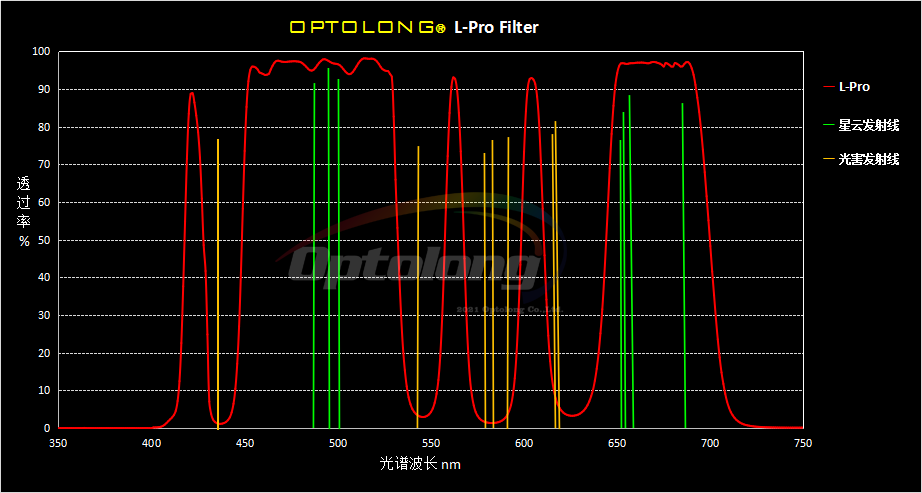Couldn't load pickup availability
Product details
- SKU OPTO-L-PRO-2
Optolong L-Pro is multi-bandpass filter which offers better color balance by maximizing the transmission band. The balanced transmission allows astrophotos to be taken with minimal color cast on broadband emission objects such as galaxies, reflection nebulae and globular star clusters.
The Optolong L-Pro (L-Professional) Filter is designed to improve the visibility of various deep-sky objects by selectively reducing the transmission of light pollution wavelengths, specifically those produced by artificial means such as mercury vapor lamps, and both high & low pressure sodium vapor lights. The Optolong L-Pro also reduces unwanted natural light caused by neutral oxygen emission in our atmosphere (i.e. skyglow).
Together with the highly transparent main nebula emission lines at OIII (496nm and 500nm), H-beta (486nm), NII (654nm and 658nm), H-alpha (656nm) as well as SII (672nm), the filter is suitable for enhancing the contrast and details for both visual and photographic purposes in sub-rural areas with heavy light pollution.
Main Use and Performance
Suitable for both visual observations and astrophotography. This L-Pro Filter is housed in a 2" threaded cell that can be attached to a 2" eyepiece or accessory as well as a CFW that accepts 2" filters. Since this filter suppresses the infrared wavelength, it can be used for "L", or Luminance imaging.
The Optolong L-Pro filter has a very low transmission reduction rate against continuous spectrum space objects, and thus is quite effective in suppressing light pollution sources when shooting galaxies, reflection nebulae and globular star clusters. The same holds true for visual star observations.
WARNING: DO NOT LOOK AT THE SUN WITH AN OPTOLONG FILTER. You could be BLINDED if you fail to observe the warning.
Technical Data
-
Optical glass fine material
-
Spectrum: 380-750nm
-
Surface Quality: 60/40 (Refer to MIL-O-13830)
-
Fine-optically polished to ensure accurate 1/4 wavefront and < 30 seconds parallelism over the both surfaces
-
High transmission at major nebula emission lines (i.e. H-alpha 656nm, OIII 496nm&500nm, SII 672nm and H-beta 486nm).
-
Precision off-band blocking, specifically the major emission lines of artificial light pollution (i.e. Na 589nm, Hg 435nm and 578nm).












